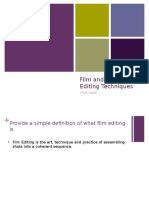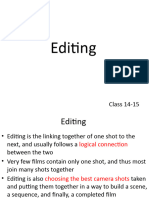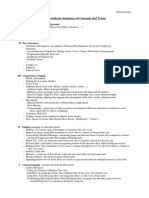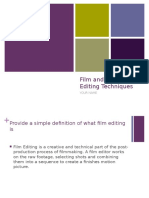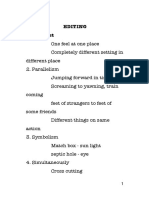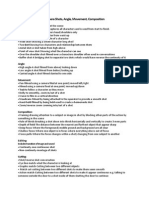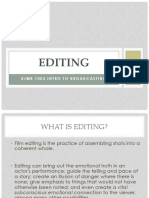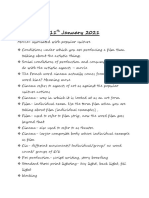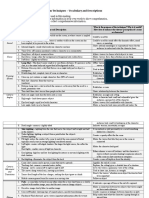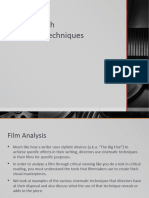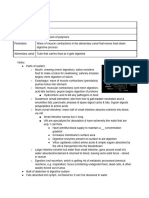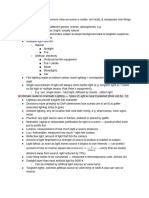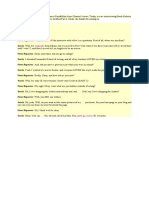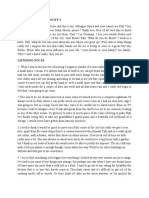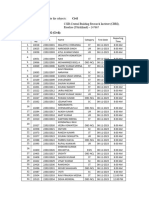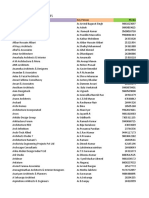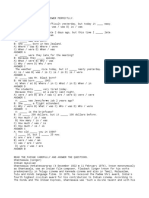0% found this document useful (0 votes)
74 views4 pagesIB Film Image Editing Notes
The document discusses various techniques for editing films, including continuity editing to create a logical narrative, montage editing to call attention to certain aspects, and different types of transitions between shots like cuts, fades, and dissolves. It explains how editing establishes relationships between shots through graphic, rhythmic, spatial, and temporal relationships. The goals of editing are outlined as maintaining continuity of the narrative or engaging the intellect through techniques like montage.
Uploaded by
ivankaCopyright
© © All Rights Reserved
We take content rights seriously. If you suspect this is your content, claim it here.
Available Formats
Download as PDF, TXT or read online on Scribd
0% found this document useful (0 votes)
74 views4 pagesIB Film Image Editing Notes
The document discusses various techniques for editing films, including continuity editing to create a logical narrative, montage editing to call attention to certain aspects, and different types of transitions between shots like cuts, fades, and dissolves. It explains how editing establishes relationships between shots through graphic, rhythmic, spatial, and temporal relationships. The goals of editing are outlined as maintaining continuity of the narrative or engaging the intellect through techniques like montage.
Uploaded by
ivankaCopyright
© © All Rights Reserved
We take content rights seriously. If you suspect this is your content, claim it here.
Available Formats
Download as PDF, TXT or read online on Scribd
/ 4

